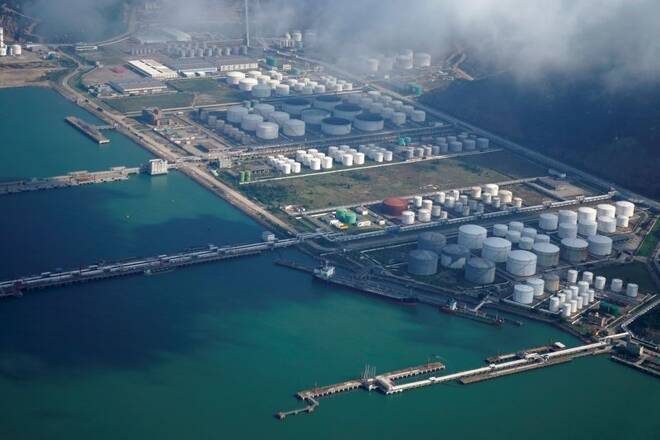Advertisement
Advertisement
China’s Iranian oil imports ease on poor margins, lure of Russian oil
By:
(Refiles to correct spacing in paragraph 16)
(Refiles to correct spacing in paragraph 16)
By Chen Aizhu and Bozorgmehr Sharafedin
SINGAPORE/LONDON (Reuters) – China’s Iranian oil imports in April came off peak volumes seen in late 2021 and early 2022 as demand from independent refiners weakened after COVID-19 lockdowns pummelled fuel margins and on growing imports of lower-priced Russian oil.
The easing of Iranian oil purchases, which still make up some 7% of imports by the world’s largest crude importer, came as Western diplomats have largely lost hope in reviving a 2015 nuclear pact while high oil prices emboldened Iran to take its time to return to an agreement.
A revived nuclear deal would allow Iran to boost its oil sales beyond China – Iran’s number one customer for the past two years – to previous clients in South Korea and Europe.
Meanwhile, Russian crude, displaced by falling demand in Europe on growing concerns about sanctions over Russia’s invasion of Ukraine, is heading to China. Russia sent tens of thousands of troops into Ukraine on Feb. 24 in what it called a “special operation”.
Initial assessments by Vortexa Analytics showed China imported nearly 650,000 barrels per day of Iranian crude in April, slightly less than the nearly 700,000 bpd discharged in March.
Kpler, another data analytics firm, tentatively pegged Iran’s April exports at 575,000 bpd, down from an average of 840,000 bpd in the first quarter of 2022, though the agency expected to revise up April volumes in coming weeks.
China’s independent refiners, also known as teapots and situated mostly in the eastern province of Shandong, are key Iranian oil buyers. The refiners have since February reduced crude imports, operating under half their capacity in April as soaring prices, tighter import quotas and COVID lockdowns squashed margins, traders said.
“The Iranian barrels started having difficulties finding buyers since February, after independent plants cut throughput,” said Emma Li, China analyst with Vortexa.
At least six cargoes of Iranian oil totalling eight million barrels have not been able to offload at Chinese ports, floating off Shandong and Zhejiang ports for more than three months, Li added.
In contrast, China’s sea-borne crude imports from Russia jumped 16% in April from March to about 860,000 bpd, the highest since last December, Refinitiv data showed.
Though the April Russian supplies were dominated by its Far East export grade ESPO blend, the prospect of growing Urals cargoes being forced out of Europe is providing a new lure for the teapots.
At least one teapot refiner bought one June-arriving Urals cargo at a discount of $6 to $7 a barrel to Brent on delivered basis, traders said.
That compared with Iranian oil, transacted at $5 a barrel under Brent.
“Teapots are facing terrible margins and plentiful oil on offer. Dealing Iranian and Russian barrels both carries risks, so refiners would be careful and picking the cheaper supplies that offer relatively better margins,” said a trading executive with a Shandong-based refiner.
To avoid U.S. sanctions, Iranian crude has been exported to China marked as oil from Oman, the United Arab Emirates and Malaysia, traders have said.
Aware of the Chinese purchases, U.S. President Joe Biden’s administration has chosen not to enforce the sanctions against Chinese individuals and companies.
China’s foreign ministry did not respond to request for comment. Iran’s oil ministry also did not respond to a request for comment.
Chinese customs data last reported imports of 260,000 tonnes (1.9 million barrels) of Iranian oil each in December and January, in its first official record in a year.
(Refiles to correct spacing in paragraph 16)
(Reporting by Chen Aizhu in Singapore, Bozorgmehr Sharafedin and Alex Lawler in London; Editing by Robert Birsel)
About the Author
Reuterscontributor
Reuters, the news and media division of Thomson Reuters, is the world’s largest international multimedia news provider reaching more than one billion people every day. Reuters provides trusted business, financial, national, and international news to professionals via Thomson Reuters desktops, the world's media organizations, and directly to consumers at Reuters.com and via Reuters TV. Learn more about Thomson Reuters products:
Advertisement
